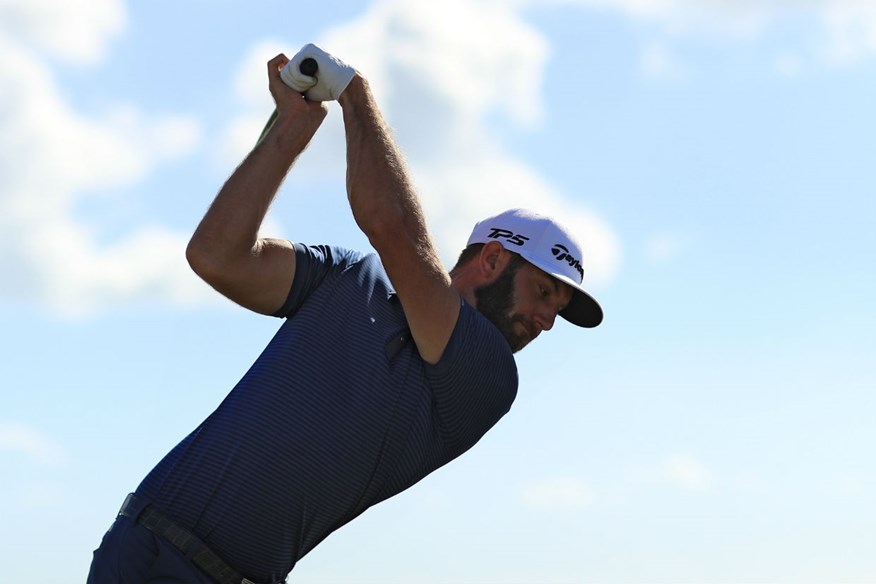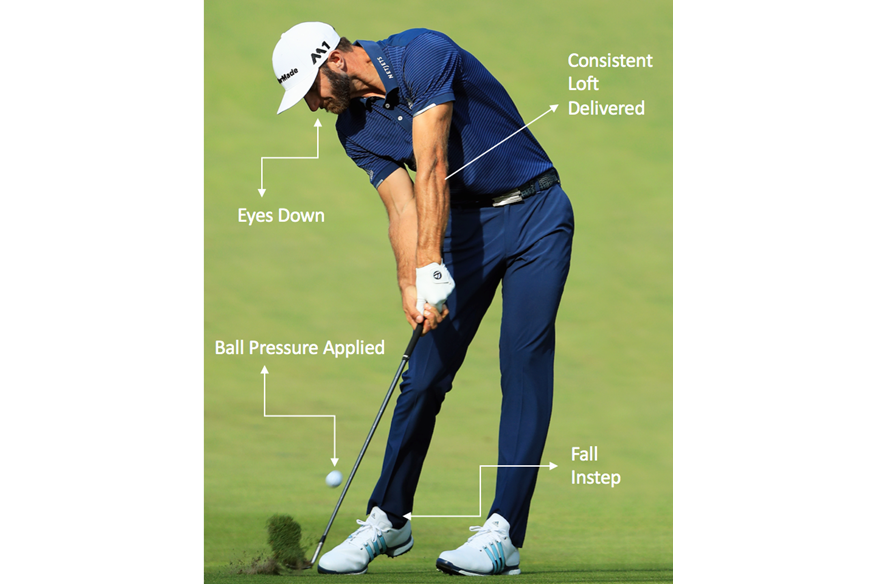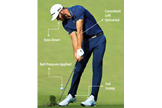Tour Technique: Dustin Johnson
Published:
Dustin Johnson: How the world’s best golfer backs up prodigious power with a pinpoint wedge game
World No.1 Dustin Johnson is of course known for his immense power. But in 2016 he set about improving the one area of his game that really needed work; his wedge play. He bought a Trackman launch monitor, started taking it to events and, together with coach Claude Harmon hit ball, after ball, after ball to groove his distance control.
The result? In 2017 he was ranked 5th in Strokes Gained in approach to the green, 9th in Greens in Regulation, 6th in proximity to the hole, and 13th in approach shots between 125-150 yards with an average of 21″.
At the first event in this year’s FedEx Cup series he beat Jordan Spieth in a play-off after a 341-yard drive and a lob wedge to four feet… proving power and accuracy are a deadly combo. This is how he Johnson does it with his short clubs.
Eyes down
Dustin’s eyes are down and he is allowing his head to hang naturally, helping his chest stay down – a move often called ‘covering’ the ball. Try to retain height and you can easily straighten up, a move that hinders rotation, weight shift and strike, often leading to that handsy release. Keep your eyes down and let your trail shoulder work under your chin.
Ball pressure applied
One of the keys to great distance control with the short clubs is the ability to make solid contact. For lofted irons that means applying slight downward pressure through impact. Dustin backs this up by creating perfect impact alignments – weight/pressure favouring his front leg and a slightly forward-leaning clubshaft – for the ideal delivery.
Consistent Loft Delivered
Dynamic loft – the clubface’s loft at impact – is at the heart of how far the ball goes. Your biggest enemy is adding loft through a handsy, flippy release. Note how DJ’s elbows have stayed a similar distance apart to address, and how the clubhead stays relatively low through impact. In a handsy release your elbows will tend to splay and the clubhead rises.
Fall instep
Take a close look at Dustin’s right foot. See how it appears to be rolled inward, a motion that allows his right knee to work toward his left knee. This keeps his pressure moving to the target, promoting good balance and helping him apply force in the correct direction, through the ball. In contrast many club players allow their trail knee to kick outwards, towards the ball.



